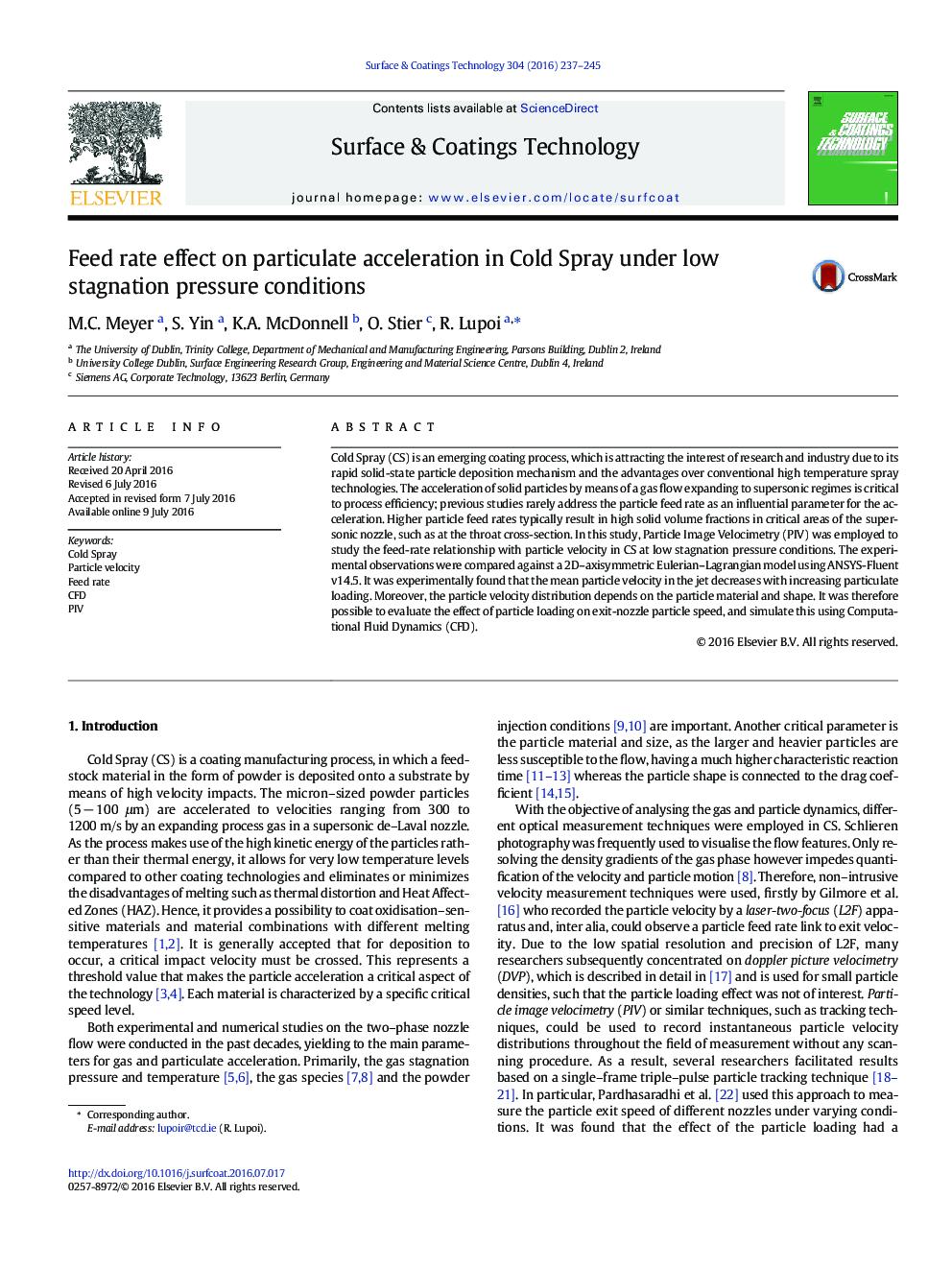| Article ID | Journal | Published Year | Pages | File Type |
|---|---|---|---|---|
| 8024948 | Surface and Coatings Technology | 2016 | 9 Pages |
Abstract
Cold Spray (CS) is an emerging coating process, which is attracting the interest of research and industry due to its rapid solid-state particle deposition mechanism and the advantages over conventional high temperature spray technologies. The acceleration of solid particles by means of a gas flow expanding to supersonic regimes is critical to process efficiency; previous studies rarely address the particle feed rate as an influential parameter for the acceleration. Higher particle feed rates typically result in high solid volume fractions in critical areas of the supersonic nozzle, such as at the throat cross-section. In this study, Particle Image Velocimetry (PIV) was employed to study the feed-rate relationship with particle velocity in CS at low stagnation pressure conditions. The experimental observations were compared against a 2D-axisymmetric Eulerian-Lagrangian model using ANSYS-Fluent v14.5. It was experimentally found that the mean particle velocity in the jet decreases with increasing particulate loading. Moreover, the particle velocity distribution depends on the particle material and shape. It was therefore possible to evaluate the effect of particle loading on exit-nozzle particle speed, and simulate this using Computational Fluid Dynamics (CFD).
Related Topics
Physical Sciences and Engineering
Materials Science
Nanotechnology
Authors
M.C. Meyer, S. Yin, K.A. McDonnell, O. Stier, R. Lupoi,
